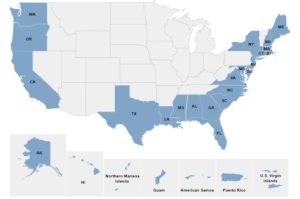
Tsunami Preparedness Week encourages awareness
On Dec. 26, 2004, thousands of European and American tourists flocked to the beaches of Thailand, Sri Lanka and Indonesia to escape the winter chill in a tropical paradise. At 7:59 a.m., a 9.1-magnitude megathrust earthquake — one of the largest ever recorded — ripped through an undersea fault in the Indian Ocean, propelling a massive 100-foot roiling mountain of water toward unsuspecting shores. Buildings folded like houses of cards, trees and cars were swept up in the rapids and virtually no one caught in the deluge survived. The Boxing Day Tsunamis would be the deadliest in recorded history, taking a staggering 230,000 lives in a matter of hours.
The most extreme tsunami event since 1960 — when a 8.6-magnitude Chilean earthquake triggered a tsunami that leveled Hilo, Hawaii — the 2004 tsunamis illustrated that while earthquakes may kill a certain number of people and injure many, tsunamis are the more difficult disaster to survive. If the raging currents don’t pull a person under, the debris becomes overwhelming.
Tsunamis are a series of large ocean waves generated by major earthquakes beneath the ocean floor or major landslides in the ocean. The waves can strike the coast with devastating force within minutes after a severe earthquake and the danger lasts for many hours. Tsunami Awareness Week — recognized this year from March 26–30 — educates coastal residents, as well as people across the country traveling to the beach for vacation, about tsunamis and encourages communities to learn and prepare themselves and their families for this unusual natural disaster.
Related:
In 2017 and 2018, Sandra Hyde, P.E., a senior staff engineer with the International Code Council’s Product Development Group, went to Chile and Japan to understand how two of the most seismically active and prepared countries in the world work toward achieving resilience for its people and infrastructure. In Chile and Japan, after each devastating tsunami, building codes — similar to the International Codes — were updated and land use changes relocated vulnerable populations from low-lying areas on the coast and along river mouths uphill into nearby mountains or inland away from the coastline.
Recovery and resilience: Earthquakes, tsunamis and more
Recovery and resilience: Tsunamis and seawalls

The National Oceanic and Atmospheric Administration (NOAA) and the National Tsunami Hazard Mitigation Program (NTHMP) designated the first Tsunami Awareness Week in 2010. The United States coast is vulnerable to near-shore and distant earthquakes, which generate fast-moving tsunamis that strike with little or no warning. As part of the awareness efforts, coastal communities within tsunami inundation zones host tsunami awareness activities, tsunami warning centers host open houses and state emergency management organizations conduct exercises to test and practice tsunami response plans. In particular, the exercises provide an opportunity to test and update emergency response plans for tsunamis — a critical component to maintaining readiness for a tsunami emergency. Coastal emergency management organizations will participate in the tests at varying levels, ranging from table-top exercises to full-scale drills and beach-front evacuations.
Following the deadly 2004 tsunamis, the U.S. Congress provided NOAA with more than $90 million to expand the tsunami detection and warning capabilities, and an additional $135 million for research, integrated observing systems, hazard mitigation and for a global tsunami warning and education network. The National Weather Service also operates a tsunami warning system for the United States, U.S. territories and western Canada through two tsunami warning centers — in Palmer, Alaska, and Ewa Beach, Hawaii. Staffed 24/7, the centers issue tsunami warnings, advisories, watches and information messages as early as five to 15 minutes after an earthquake, which helps state and local emergency management agencies determine the appropriate response, including whether or not to evacuate people from the warned area. As a result of these investments, the nation and the world are better prepared for the next tsunami.








